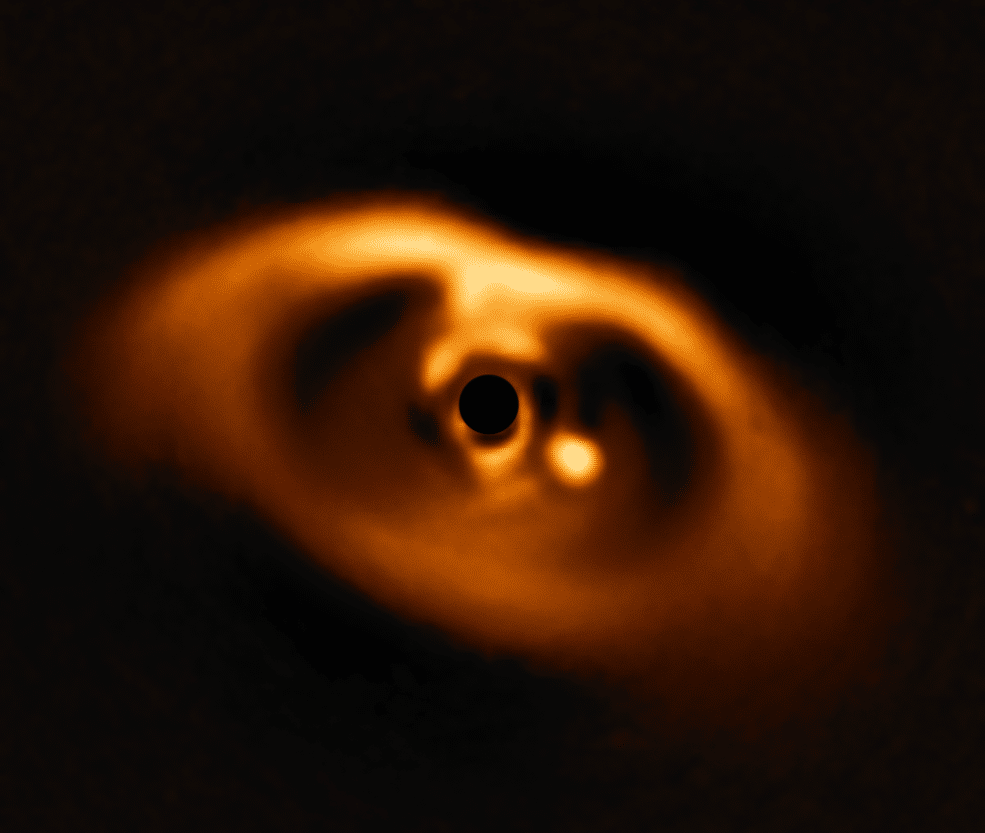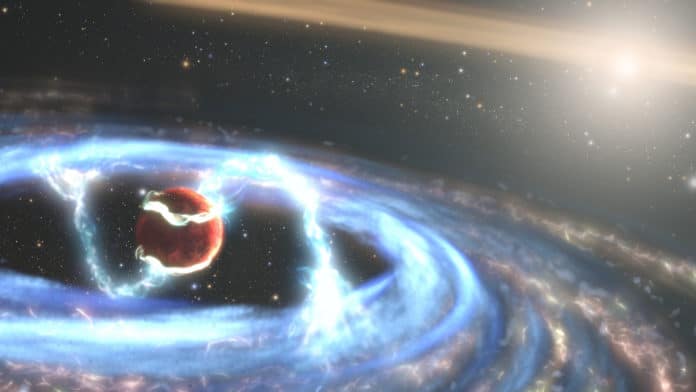A rare look at a Jupiter-sized, still-forming planet, captured by NASA‘s Hubble Space Telescope, offers astronomers an opportunity to see material falling onto a planet. This planetary system seems to feed off material surrounding a young star.
The exoplanet called PDS 70b is located 370 light-years from Earth in the constellation Centaurus. It orbits the orange dwarf star PDS 70, which is known to have two actively forming planets inside a huge disk of dust and gas encircling the star.
Yifan Zhou, also of the University of Texas at Austin, said, “This system is so exciting because we can witness the formation of a planet. This is the youngest bona fide planet Hubble has ever directly imaged. At a youthful five million years, the planet is still gathering material and building up mass.”

Hubble’s observations allowed us to estimate how fast the planet is gaining mass.
Using UV observations, astronomers were able to measure the planet’s mass growth rate directly. The measurements suggest that the planet is at the tail end of its formation process.
The planet system is a primordial gas-and-dust disk, providing fuel to feed the growth of planets throughout the entire system. Scientists noted that magnetic field lines extend from its circumplanetary disk down to the exoplanet’s atmosphere and are funneling material onto the planet’s surface.
Zhou said, “If this material follows columns from the disk onto the planet, it will cause local hot spots. These hot spots could be at least ten times more desirable than the temperature of the planet. These hot patches were found to glow fiercely in UV light.”
“The observations also offered detailed insights on how a giant planet grows.”
Brendan Bowler of the University of Texas at Austin said, “Thirty-one years after launch, we’re still finding new ways to use Hubble. Yifan’s observing strategy, and post-processing technique will open new windows into studying similar systems, or even the same system, repeatedly with Hubble. With future observations, we could potentially discover when the majority of the gas and dust falls onto their planets and if it does so at a constant rate.”
Journal Reference:
- Yifan Zhou et al. Hubble Space Telescope UV and Hα Measurements of the Accretion Excess Emission from the Young Giant Planet PDS 70 b. DOI: 10.3847/1538-3881/abeb7a
